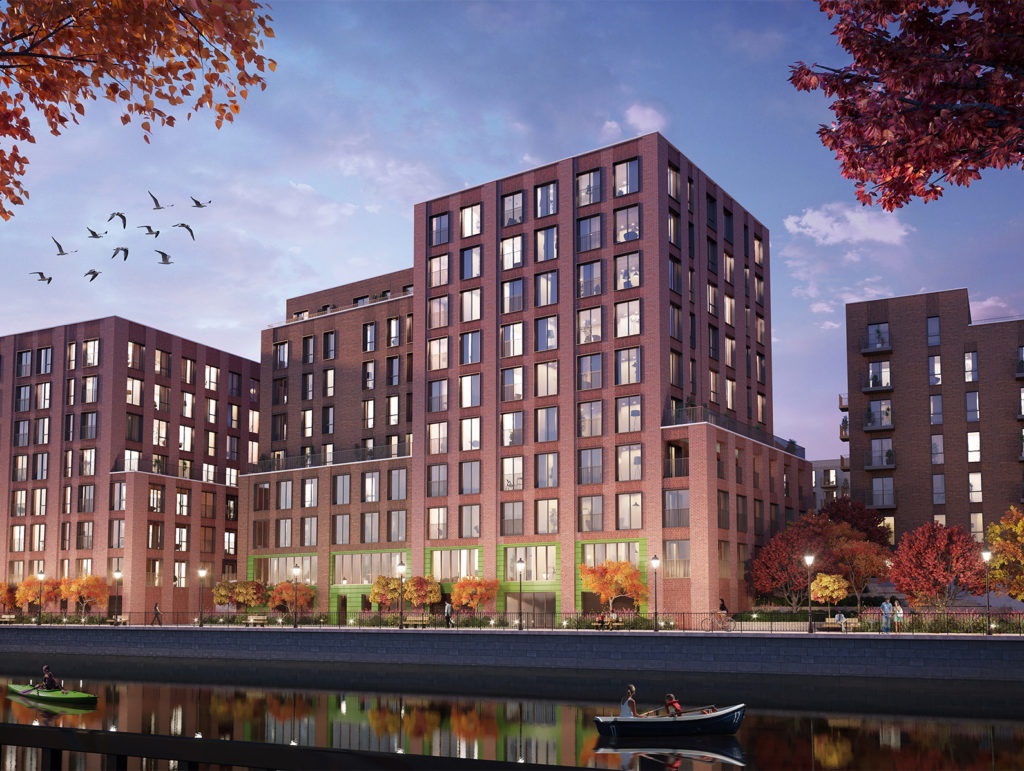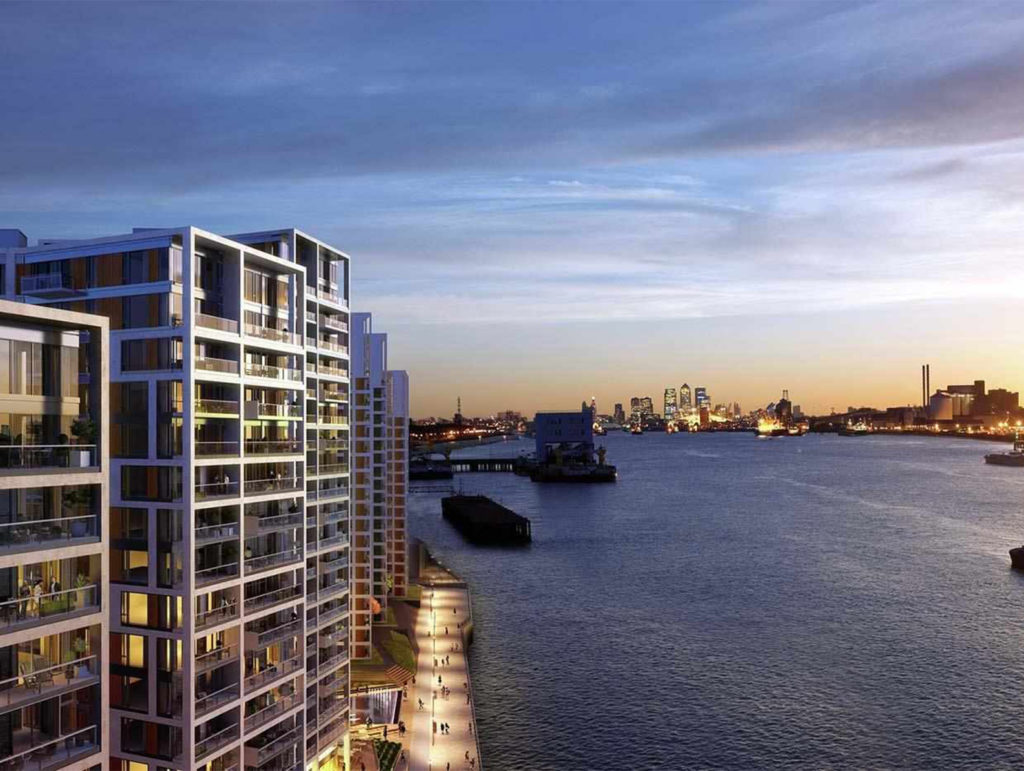
There’s possibly never been a better time to get into property investment.
This notion may surprise you if you’re a beginner.
After all, with the implications of 2020 still being felt and the Covid-19 pandemic still grasping the UK in its tight talons, you may think no sector can thrive right now.
But thrive the property market has. The past 12 months have been revolutionary for the UK property market.
Average property values grew at their fastest rate since 2004, reaching and surpassing a record high of £250,000.
The growth was so impressive and unprecedented, in fact, that UK property experts had to revise their price predictions for the future.
It isn’t just house prices that wildly increased, either.
Rent values as of December 2020 were 5.7% higher outside of London than in 2019.
So, it seems now is a swell time to embark on a property venture and get involved in real estate investing.
But where to start?
Property can be complicated. With more acronyms and shorthand than you can shake a stick at, it’s easy to feel completely overwhelmed and out of your depth.
Well, luckily, we have you covered.
This beginners guide will cover the absolute basics of real estate investing and explore the most popular property investment strategies in the UK.
From rental property investment strategies, to investment property strategies, and more, you will finish this guide ready to tackle all that property has to offer. Let’s get started.
Contents
- Residential buy to let
- Commercial buy to let
- Purpose-built Student Accommodation
- HMO’s
- Buy to Sell
- Invest in up-and-coming areas
- Off-plan
- Holiday Lets
- Rent to Rent
- Property Development
Residential Buy to Let

Definition: Residential buy to let is when an investor buys a property to rent to a tenant.
If our first entry on this list was ice cream, it would be vanilla (I love vanilla).
The bread and butter of the property investment world, buy to let property is one of the most popular property investment strategies UK cities offer.
There’s a good reason for this, too. The unprecedented growth levels seen in the UK have benefitted buy to let property investors the most, as they have helped increase both forms of returns.
Residential property allows investors to earn two forms of income, through both rental income and capital appreciation.
While rental income is quite self-explanatory, let’s address the capital elephant in the room.
Capital appreciation is the growth in house prices over time.
Chances are, when you buy a property, you will want to sell the property further down the line for a huge payout. Investing in an area with colossal capital appreciation potential will mean you can enjoy an even bigger profit when the time comes.
Pros
- Low-risk
- Easy to get started
- Two types of returns on residential property
- Can be completely hands-off with property management companies
- Consistent monthly income
Cons
- Not ideal for those looking for short-term investments
- Can encounter void periods if low demand in the area
Commercial Buy to Let

Definition: Commercial buy to let is when a property investor will purchase a commercial building unit and rent it out to business owners or companies.
The next entry in our property investment strategies list is commercial property.
Closely related to residential buy to let (probably cousins), commercial property can be an incredibly fruitful venture if you have the money for it.
While residential buy to let is a more long-term strategy with your eyes on capital growth, commercial can be a lot more for the here and now.
That’s because rent for commercial buildings is often considerably higher than that of residential.
Running costs are surprisingly easier to deal with, too.
While residential landlords often have to spend a considerable amount of time fixing broken washing machines and general upkeep (unless you use a property management company), commercial investors can usually avoid this hassle with certain leases.
You often aren’t responsible for the building’s maintenance, either!
Pros
- Longer lease lengths
- Tax advantages
- Generally higher rent
- Easier upkeep
Cons
- Low capital appreciation
- Finding tenants can be a lot harder, so longer void periods
- A more expensive entry point
- Commercial properties can be hit hard in times of economic uncertainty
Student Buy to Let

Definition: Student buy to let is when a landlord purchases a property to rent to students.
You can probably sense a running theme on this property investment strategies list, but the buy to let family grows even bigger with student buy to let.
The UK student market is an excellent example of rental property investment strategies and is very similar to residential buy to let. The only difference is that your target demographic is students.
So why consider student property investment? Well, the UK student market is currently booming, with more students than ever looking for quality property.
In the North West, Manchester has the largest student market population in Europe, with over 100,000 students calling the city home.
There are over 14,000 international students at the University of Manchester alone, highlighting the UK’s appeal as an education hotspot.
Property prices for student property tend to be more affordable than traditional methods, which means you can get even higher rental yield figures.
Take our City Point development. Prices start below £60k, and you can get huge yields of up to 8%. On the other hand, ELEMENT- The Quarter, a revolutionary eco-build targeted at post-graduates and young professionals, starts at just £92,950 with 8% returns.
Pros
- A more affordable entry point
- Two forms of returns
- Huge rental demand
- Hands-off investment options
- Higher rental yields
Cons
- Capital growth not as substantial as residential buy to let
- Limited to one demographic
HMOs

Definition: An HMO, or a house in multiple occupation, consists of at least three tenants living together, forming more than one household. They will share a toilet, bathroom, or kitchen facilities with other tenants.
An increasingly popular form of rental property investment strategies, an HMO investment is another type of buy to let strategy to consider in the property market.
As you can see by definition, HMO properties have more residents, which means rental yields can often be significantly higher in an HMO investment.
In fact, yields can reach up to three times higher on a single let. The current average is around 6.3% – considerably higher than the UK average for traditional residential builds.
Another unique benefit of a house in multiple occupation is the fact that if one tenant doesn’t pay their bills, you will still get income from the others. This highly reduces any chance of nasty void periods, which can suck away your savings.
Certain types of student accommodation can fall under the HMO bracket, which means you can get access to a wide range of residents.
Be warned, though, HMOs can be a headache with complex rules and regulations attached to them.
If you are a beginner looking for easy property investment strategies, this may not be a viable option.
Pros
- High yields with multiple tenants
- Less chance of void period
Cons
- Investment strategy has complex tax rules and planning legislation
- Hard to obtain buy to let mortgage
- Sharing rental properties becoming less desirable
Buy to Sell

Definition: Buy to sell, or house flipping, is when a property investor purchases a property with the desire to sell it for a quick profit.
Investment property strategies are often long-term, but the next entry on our list has some shorter-term goals in mind.
Buy to sell can be expensive and comes with an abundance of risks.
The trade-off is that you are in line for a massive profit with minimal work if you get it right.
House flipping is the idea of buying an undervalued property with the purpose of re-selling it.
You could either refurbish and develop the property or quickly sell the property if you were able to nab it at a cut-price.
The main difficulty involved in buy to sell is the knowledge required.
You will need to identify what properties are undervalued and which will fetch a hefty price.
Understanding market data is also vital, as it will be essential to know the levels of demand in the area and the scope for capital growth.
If you get it wrong, it can be a nightmare for a property investor.
Unforeseen problems can arise, which may deplete your savings.
Similarly, if you have invested in an area with limited demand, you may end up being stuck with the property and paying for maintenance and mortgage payments.
Pros
- Potential to make huge returns
- Not a rental property investment strategy, so can avoid dealing with tenants
Cons
- Very hands-on
- Financial disaster if done wrong
- Minimal gains if you don’t identify high potential property
- Can be expensive if renovation work needed
Invest in Up-and-Coming Areas

Potentially an obvious example of property investment strategies, but one that can earn you a huge profit down the line.
Investing in up and coming areas is one of the best ways to assure yourself significant capital appreciation down the line.
So what do we mean by up and coming?
An up and coming area should have vast house price predictions for the future while also having more affordable prices now.
They may also have an emerging local economy or are undergoing regeneration work that will make them more appealing.
The perfect example of an emerging area is Slough.
You may be familiar with Slough from the comedic efforts of Ricky Gervais in The Office.
The town has been ridiculed in popular culture for a long time now, believing it is an unattractive place to live.
This can’t be further from the truth, though.

Slough has been voted the best place to live and work for many years and is quickly emerging as an economic powerhouse.
It’s ideally located on the London commuter belt, too, and avoids the capital’s eye-watering prices.
The average Slough property is valued at around £331,000.
Compare this to London, which is almost £910,000 according to Zoopla.
With billions of pounds worth of regeneration happening in the town, house prices are set to rise in the area by over 17% by 2024.
That’s 5% higher than London’s predictions!
New transport links also put Slough within minutes of the capital.
This is a recipe for success and might be worth considering for an investment.
Off-Plan

Definition: Off-plan is a property that is for sale but is still under development or in the planning stages.
If you’re looking for the most affordable investment property strategies, then off-plan should be at the top of your list.
You may find it risky to invest in a property that hasn’t even been completed yet, but you get to enjoy some fantastic prices because of this.
Let’s use Manchester’s Merchant’s Wharf development, for example.
Prices on this luxury set of waterfront apartments in Salford are around 55% below market value.
The fact is you won’t be able to find property equal to the quality of this build for the same price.
With these costs, you will also see a bigger scope for sizeable capital growth. The chances are the property will already increase in value upon completion.
Investing through property companies can also get you access to further discounts and deals, meaning off-plan can get cheaper still.
It’s essential to do due diligence on this method, though.
Due diligence is always vital, but especially for off-plan.
Check for the developers behind the build and see how reliable they are.
You don’t want to invest in a development unlikely to be completed (obviously), so make sure you do ample research before starting your venture.
Pros
- Far more affordable than traditional methods
- Can make massive savings at below market value prices
- Bigger scope for huge capital growth
- Exclusive discounts and deals
Cons
- Due diligence required
- Property development could be delayed
Holiday Lets

Definition: Holiday lets are when an investor buys a property to rent to holiday-goers and tourists. Examples include platforms like Airbnb.
Another member of the buy to let club, holiday lets can be a fantastic way of making income.
Here, you can buy a property or, if appropriate, rent out part of your home to tourists and visitors in the area.
Using sites like Airbnb, you can advertise your property to potential tenants.
If you opt for renting out a room in your home, you can take advantage of tax-saving schemes like the Rent a Room scheme.
The scheme lets you earn up to £7,500 per year tax-free, which is nice.
These are great ways to earn some side income, but it does have its drawbacks.
Tourism is often seasonal, so you may go long stints without any tenants at all.
Likewise, if you buy in an area with reducing tourism levels, you may not find any visitors.
Pros
- Good returns
- Tax advantages
- Can be inexpensive if you choose to rent a room in your home
Cons
- Difficult to find mortgages
- Hard to look after your property if it’s far away from your home
- High chance of void periods
Rent to Rent

Definition: Rent to rent property investment is when an investor lets a property from another landlord and then rents to another tenant.
I’ll forgive you for not hearing about this method before, as it is perhaps one of the most obscure examples of property investment strategies.
Rent to rent can be quite bizarre as there are technically two people renting for the same property.
The investor has to find tenants, maintain the property and pay all the appropriate bills.
The benefit, though, is that you will usually pay reduced rental costs to the landlord so you can make a profit.
Not many landlords will agree to this arrangement, so you may be stuck for options.
Although, it allows you to dodge the hassle of finding a property yourself, which may be music to your ears.
Pros
- Can avoid purchasing a property yourself
Cons
- Chances are you won’t find another willing participant
- Smaller returns than buy to let
- No capital growth appreciation as you don’t own the property
Property Development

Definition: Property development is the process of renovating or building a property.
Our final example of property investment strategies will perhaps require the most knowledge.
Building a property from the ground-up can be a lengthy process requiring you to have high levels of dedication.
Renovating a build can be equally tricky and can bring a whole host of unforeseen problems, as mentioned earlier.
The main benefit is you can earn tonnes of money if you produce a quality build.
Pros
- Complete creative freedom on the property
- Can create the perfect property for an area
- Can sometimes be cheaper than buying a full house
Cons
- Requires expert knowledge
- Time-consuming
- If things go wrong, it can be incredibly expensive.
Where to Use Property Investment Strategies UK?

We hope you’ve enjoyed our list of rental property investment strategies and property investment strategies UK. From HMO properties to student buy to let, there are many property investments UK investors can explore.
This is just the tip of the iceberg, though. There are tonnes of alternative strategies to consider that haven’t been mentioned on this list.
From REITs and Property Crowdfunding, there are so many avenues to explore property investments UK.
If you fancy reading more about property crowdfunding and learn about investing tips, check out our beginner guide on how to invest in property.
So, now that we have the knowledge required, where should we invest?
This is where research comes in.
Understanding the best places to invest and which cities have the most promising market data is vital for a successful venture.
This is probably the most crucial example of property investment strategies.
Research. Research. Research some more.

You need to pay close attention to rent growth, house price predictions, and rental yields (return on your investment through rent) to absolutely nail your first venture.
Property in the UK is often fantastic compared to neighbouring countries in the EU, but there are some places better than others.
As it stands, the North West is the best place to invest.
Cities like Liverpool boast the highest rental yields in the country at up to 10%.
Likewise, the region sports the highest growth rate potential, with house prices increasing by 27.3% by 2024.
Rent values aren’t too shabby either, rising by a colossal 5% in late 2020 compared to 2019, according to HomeLet.
Are you interested in investment in property?
We have several Liverpool and Manchester properties to choose from, with yields of up to 8%.
Contact us today and explore all of our latest opportunities.
